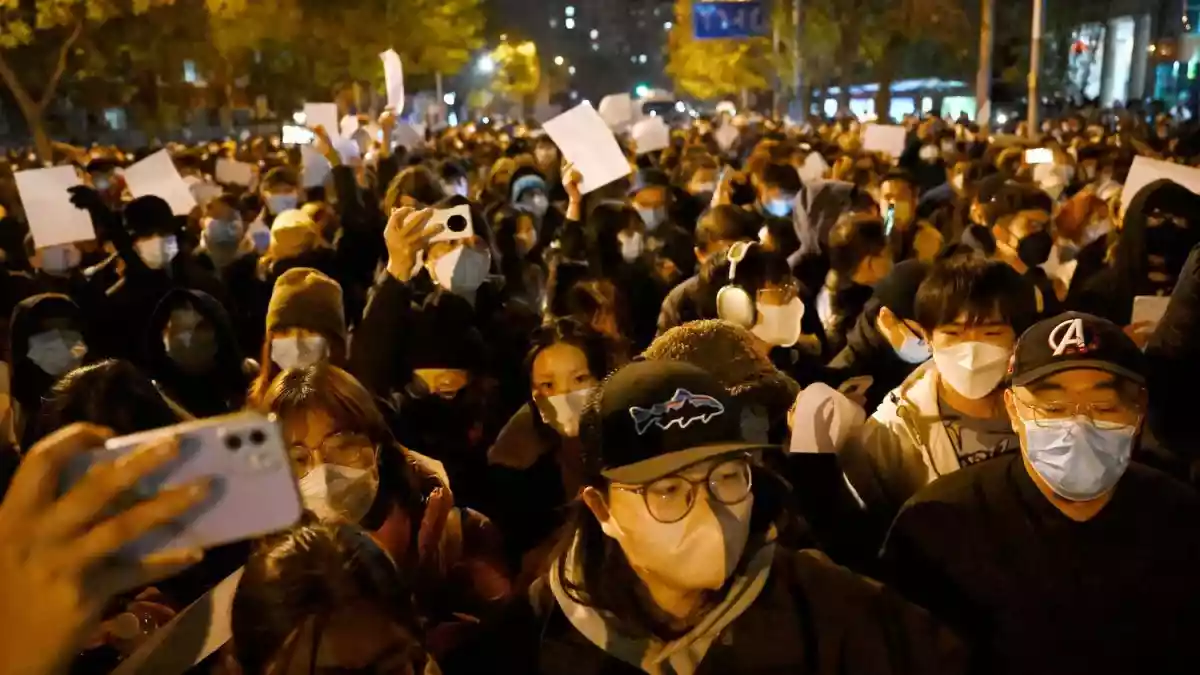
An American nonprofit human rights organization, in its latest report released on August 28, documented 805 incidents of dissent in China between April and June, which marks an 18 percent increase compared to the same period in 2023, despite the Chinese communist regime’s stringent controls.
According to the report by Washington-based Freedom House’s China Dissent Monitor (CDM), most of the dissent incidents recorded across 370 provincial cities in China were related to labour disputes (44 percent) and homeowners’ protests (21 percent), with the remainder involving diverse groups like rural residents, students, parents, investors, consumers, members of religious groups, activists, Tibetans, ethnic Mongolians, and members of the LGBT+ community.
Guangdong Province saw the highest number of protests, accounting for 13 percent of the total, followed by Shandong, Hebei, Henan, and Zhejiang. Shenzhen, Xi’an, and Sanya were among the cities with the highest rates of protests over economic issues.
Additionally, several cities in Guangdong Province also experienced a significant percentage of protests, as per the report.
Freedom House’s CDM, documenting nearly 6,400 dissent events over two year, logged 805 dissent incidents in the second quarter of 2024, as per the report.
“The top regions for protest events were Guangdong (13 percent), followed by Shandong, Hebei, Henan, and Zhejiang. CDM has logged a total of 6,300 cases of dissent since data collection began in June 2022,” the report read.
The CDM documented 228 protests led by rural residents over the past two years, most of which were linked to forced relocation and unfair land acquisition.
These cases shed light on the corruption and discontent that arises from widespread land expropriation, the report said.
- China asserts dominance and intensifies surveillance in Tibet
- US Senate Introduces Legislation to Solidify Its Stand on Tibet-China Conflict
- Xi Jinping’s authoritarian rule is under question by its citizens: Report
- TikTok used for disinformation campaign in Taiwan
Keep Reading
The report analyzed 91 protests led by taxi, ride-hailing, delivery, bus, and truck drivers in China, while many of these events were sparked by policies affecting transportation workers, such as regulation on ride-hailing apps and self-driving taxis.
Dissent by homeowners and construction workers constitute 44 percent of all dissent cases in CDM’s database, reflecting the major impact of the real estate crisis on citizens’ livelihoods.
Despite the Chinese government’s attempts to abate the real estate sector’s collapse, CDM data indicates that protest frequency has not declined.
Analysis of CDM’s data collected over two years indicates that Shenzhen, Xi’an, and Sanya have more protests over economic grievances on a per capita basis than any other cities in China, while many other highly ranked cities are located in Guangdong Province.
Meanwhile, despite Beijing’s intervention efforts, China’s economy is sliding into stagnation after four decades of growth.
The communist regime’s measures have been unable to resolve key obstacles to economic advancement, such as the real estate crisis, a trade war with the United States, restrictions on the private sector, and the prolonged negative impacts of its stringent Covid-19 lockdowns and restrictions, as per the report.
The report indicates that many of the protests were suppressed by the Chinese Communist Party (CCP) due to concerns that they might pose greater political risks.
China observers suggest that the rise in protests, despite the CCP’s stringent control, signals a legitimacy crisis for the party.
Chairman of the board of Taiwan’s New School for Democracy, Tseng Chien-Yuan, told The Epoch Times that the current situation in China is unlike anywhere else, as even the middle class, including property owners, have stood up to protest, which shows that China’s economic situation is very serious.
“People are forced to live in poverty, and the legitimacy of the CCP’s rule, which is built on economic development, is greatly weakened,” Yuan said.
“Under strict surveillance, people still come out to protest, which is a warning sign of a major crisis,” he added.
Speaking to The Epoch Times on the matter, Wu Se-Chih, a researcher at Cross-Strait Policy Association in Taiwan, said, “Generally speaking, social protests occur when people’s forbearance has reached its limit.”
He claimed that the real number of the protests is much larger than what the CDM was able to collect because of the CCP’s control and its censorship.
Freedom House acknowledged the media restrictions in China and the “risks associated with collecting information from within the country about dissent and protest” in the report.
Freedom House’s CDM “was created in response to the information gap” through data collected from “news reports, civil society organizations, and China-based social media,” as well as other sources.
Wu Se- Chih said that the Chinese regime always suppresses protests and blocks information from reaching the public and outside world.
The CCP also “used other methods to ease the backlash from the people or society,” Wu said, adding that “the CCP now has fewer and fewer means that it can use, especially as it’s facing serious financial problems.”
The researcher said when Chinese society as a whole falls into economic despair, it will be more difficult for the CCP to control the power of the people to counter its regime.
“In the end, the CCP will collapse due to the social unrest,” he told the publication.






